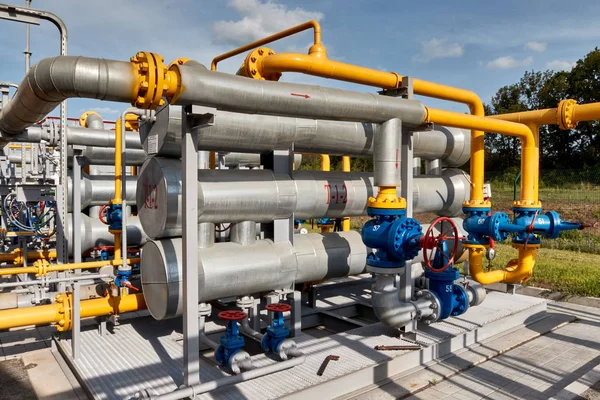4 Gas Distribution Stocks To Watch In A Challenging Industry

Image Source: DepositPhotos
Natural gas distribution companies offer services to transport natural gas from the region of production to millions of consumers across the United States. The utilities under the Zacks Utility Gas Distribution industry control miles of underground pipeline network to provide natural gas services to customers. The rising demand for clean, burning natural gas will create more opportunities for natural gas distribution companies.
Sempra Energy (SRE) , with its widespread transmission and distribution lines and interstate pipelines and significant investments in infrastructure development projects, is poised to benefit as natural gas production volumes are expected to increase in the 2024-2025 time frame. Steady investments and expanding infrastructure in crucial production regions should drive the performance of Atmos Energy Corporation (ATO) , UGI Corporation (UGI) and MDU Resources Group (MDU) .
About the Industry
The shale revolution has substantially increased natural gas production. Its clean-burning nature steadily boosts demand for natural gas from all customer groups. Natural gas distribution pipelines are vital in delivering natural gas from intrastate and interstate transmission pipelines to consumers through small-diameter pipelines. The natural gas network in the United States has nearly 2.3 million miles of underground distribution pipelines. Major concerns for the industry are aging infrastructure and rising investment costs required to upgrade and maintain the vast network of pipelines due to the hike in interest rates. Competition from other clean energy sources can lower demand for natural gas and, consequently, for pipelines.
Factors Shaping the Future of the Gas Distribution Industry
Production and Export Volumes of Gas to Increase: The short-term energy outlook released by the U.S. Energy Information Administration (EIA) indicates that domestic dry natural gas production will grow to 105 billion cubic feet per day (Bcf/d) in February 2024 and continue to remain at that level in 2024 as weather-related disruption decreases. EIA expects dry natural gas production to average 104 Bcf/d through 2024 and will increase to 106 Bcf/d in 2025. EIA also forecasts gas consumption to increase 5% in first-quarter 2024 compared with the year-ago quarter level. Export volumes are expected to increase in 2024 and 2025, providing much relief to natural gas transporters. EIA expects U.S. gross liquefied natural gas (LNG) export volumes to increase nearly 2.2% year over year to 12.09 Bcf/d in 2024, and exports are expected to increase 19.4% to 14.43 Bcf/d in 2025. This indicates the need for more pipelines to send LNG to export terminals.
Fresh Investments Create Demand: The clean-burning nature and wide availability of natural gas across the United States are driving demand. At present 187 million Americans use natural gas. The distribution network will continue to transport natural gas to all parts of the United States. With five new LNG export terminals being developed in the United States, there should be increased demand for natural gas pipeline services to transfer the gas from production areas to these terminals. Per EIA, once completed, the five new LNG projects will increase the combined export capacity by 9.7 Bcf/d by 2025. Per Playbook.AGA.org, one residential customer signs up for natural gas service every minute and 80 businesses add natural gas service each day. As production and demand for natural gas increase, more pipelines will be required to safely transfer the commodity to end-users.
Possibility of Interest Rate Decline is a Tailwind: Utilities, in order to maintain, upgrade and expand operations, approach capital markets for loans. The utilities have been enjoying near-zero interest rates for the past few years. However, multiple rate hikes by the Federal Reserve took the benchmark rate to the 5.25-5.50% range, which impacted the utility operators. However, in its last four meetings, the Fed did not increase the benchmark rate, and there is a possibility of rate cuts in 2024. The likely drop in interest rates in 2024 would be a positive for utility operators who are planning large investments in infrastructure upgrades and the addition of renewable sources of energy to produce electricity.
More By This Author:
5 Standout Features Of The Q4 Earnings Season3 Quarterly Releases To Watch In The Coming Week
PepsiCo Q4 Earnings Surpass Estimates



